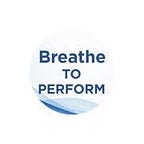Stress Solutions for Teachers: A Digital Toolkit
by David J. Bidler
If you’re reading this, the chances are that your life just got flipped upside down.
You are working to take a craft that you’ve perfected in the classroom and scale it onto Zoom or another online learning portal.
You’re learning on the fly while working to teach students who are reeling from transition themselves.
The camaraderie of other faculty members and the social infrastructure of a school simply can’t be recreated online.
These are challenging times to do a challenging job.
This toolkit won’t change that.
What we aim to provide is a framework for understanding the underlying physiology of stress.
We hope to share simple tools for getting ahead of the body’s stress response so that you can approach your day from the most advantageous starting position.
We hope that this simple toolkit helps you to take control of your internal state as you navigate the challenges of a rapidly changing environment.
Above all else, we hope that it helps you feel your best when it matters most.
What is stress?
Stress is any physical, mental, or emotional strain or tension that we experience-whether positive or negative.
The positive stress of exercise strains muscles so they grow. Stress that exceeds our ability to effectively manage it can take a toll on our mental and physical health.
Whether positive or negative, all stress has the potential to cause changes to our body and brain.
When we experience stress, the body responds first.
Our heart rate increases, skin temperature warms, and our breathing patterns change-all before we are consciously aware that we’re getting “stressed out.”
The more that we understand the body’s stress response the more that we can choose how stress affects us.
How We Think About Stress Matters-A Lot.
We all know that stress is a natural part of modern life. A lessor know fact is that our perception of stress that has the greatest impact on how it effects our health.
In a study of over 180 million Americans those who thought that stress negatively impacted their health had a significantly higher risk of physical and mental health issues.
Thinking of stress management as a skill can dramatically change the way that stress effects us.
Here are some simple tools to hone that skill-especially when stress hits suddenly and you need to manage it on the spot.
Stress Tip: Noticing the slight changes in breathing and muscle tension that take place before the feeling of stress-or anxiety-is noticeable lets you get the jump on the stress response.
30 second stress solution: Shift your focal point of vision from narrow to peripheral. Take in the whole room with your eyes. Span your gaze as wide as you can. This is why cows are so chill. Seriously. Peripheral vision is one of the quickest ways to make changes in your brain that lower stress levels in the body-and you can do it anywhere, anytime.
2 minute stress solution: This 2 minute breathing exercise will help shift your body and brain into a state of relaxation. Use it before bed or whenever you need to shift from stressed to relaxed in 2 minutes.
5 minute stress solution: This 5 minute stretching and breathing sequence will teach you how to direct airflow throughout the body. Great for reducing low back or shoulder tightness-or just mellowing out.
Use this toolkit anytime that you want to get ahead of the stress response and pass it along to a colleague who may find it helpful!
David Bidler and Lex Clark, Breathe to Perform
Follow us @breathetoperform on Instagram for stress management strategies, breathing exercises, fitness training, and more!
David Bidler is president of Physiology First, a nonprofit organization that shares solutions to stress and anxiety management with students across the globe.
In 2017 David co-founded Breathe to Perform to share the power of better breathing with individuals, families, workplaces, and teams. David is the author of the upcoming book Breathe To Perform: 3 Simple Breathing Exercises to Reduce Stress, Improve Energy, and Peak Athletic Performance coming in April, 2020.
David owns and operates The Distance Project: Strength and Conditioning in Freeport, Maine.
